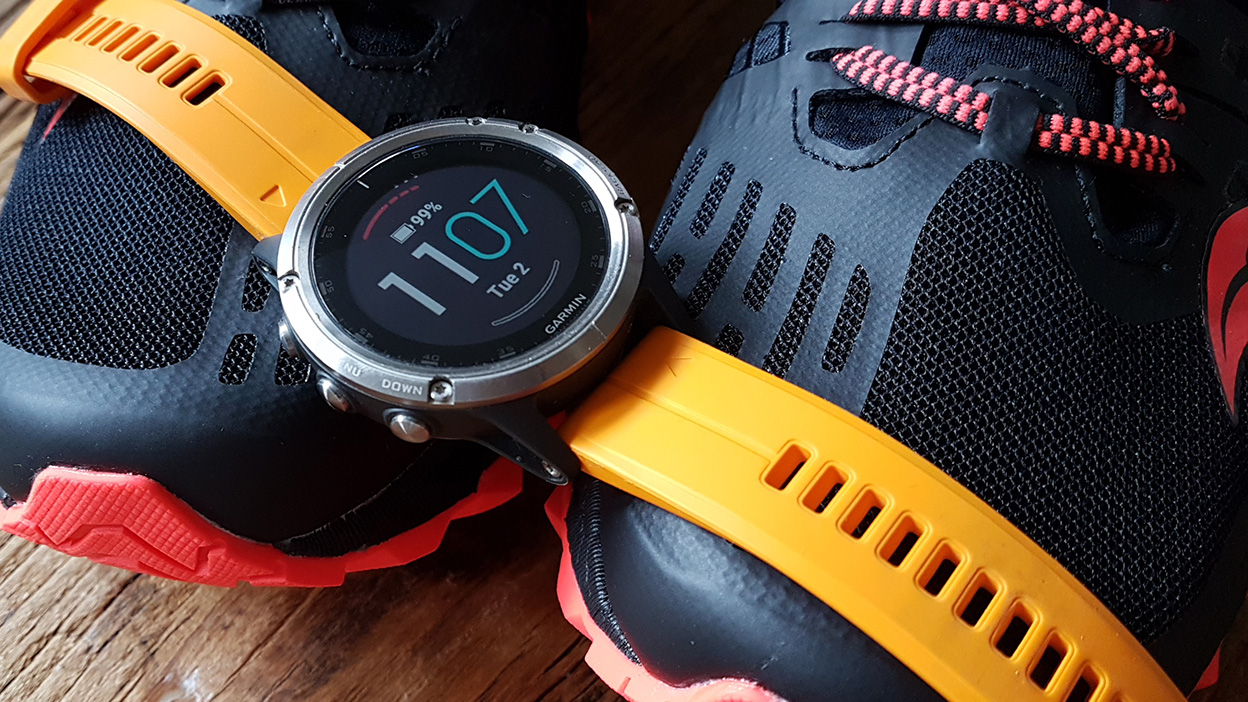Why you can trust TechRadar
Features and tracking
- Can track a wide range of sports
- Also offers sleep, stress and step tracking
- Can provide a fitness age estimate
Fenix watches are about as comprehensive as it comes. Running, swimming, cycling and of course triathlon are central to the feature set, and those are each superbly well catered for, but you can also throw in hiking, climbing, mountain biking, skiing, snowboarding, cross-country skiing, stand-up paddleboarding, rowing, kayaking and even golf.
Outside of those moments where you’re indulging your particular sport passion, there’s sleep tracking, stress monitoring, general activity tracking, including steps, move alerts, flights climbed and fitness age estimate (ours said we had the fitness age of an ‘excellent 20-year-old’).
But the Fenix really comes to life when you get moving.
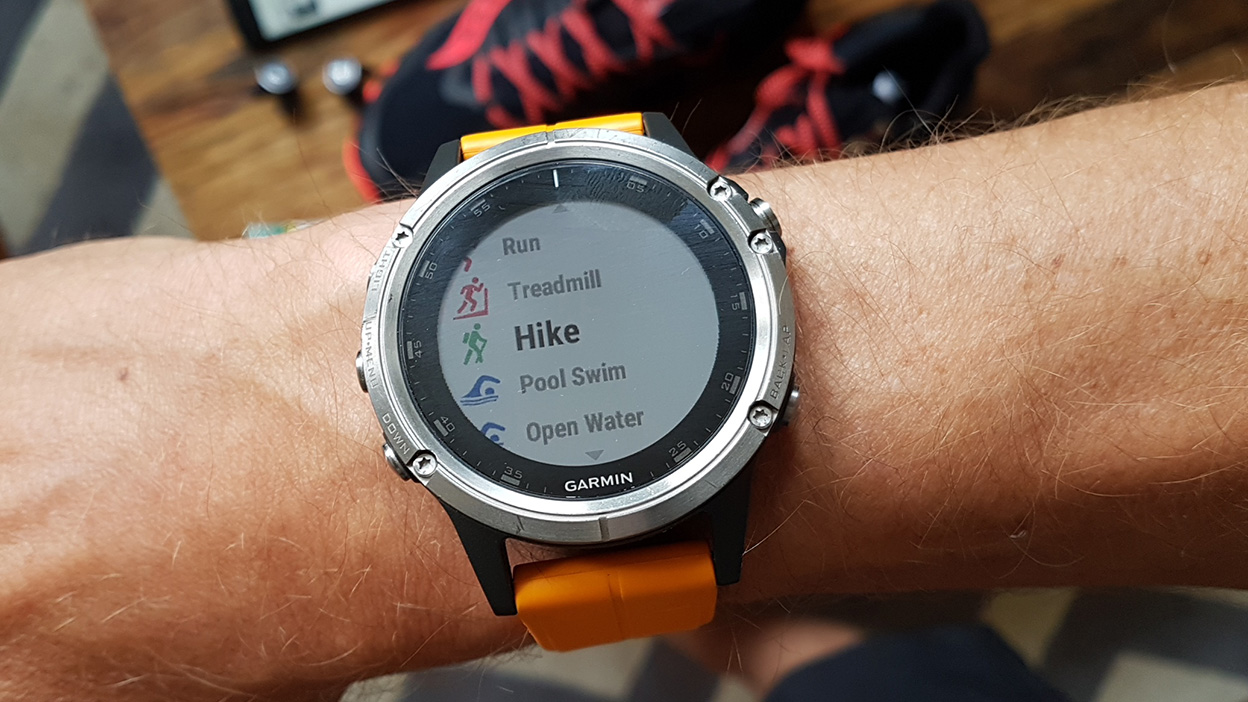
Running, trail running and hiking
- Customizable sport modes
- Power isn't tracked from the wrist
- Pulse Ox Acclimation available on 5X Plus
Road, trail and treadmill running are all served with their own sport modes and one thing we love about the Fenix was how incredibly easy it is to tweak the stats that display on the watch during your session, from the watch itself.
It takes seconds to rejig the layout of each screen, to select the number of stats (1-4) and what those are from pace, speed, heart rate, ascent, vertical speed, power and many, many more. You can also create your own sport modes to shortcut the need to fiddle pre-race.
All the usual run stuff is there with distance, pace, speed etc. When it came to GPS accuracy as we mentioned earlier the Fenix 5 Plus supports GPS, GLONASS and Galileo and we found it to be very reliable.
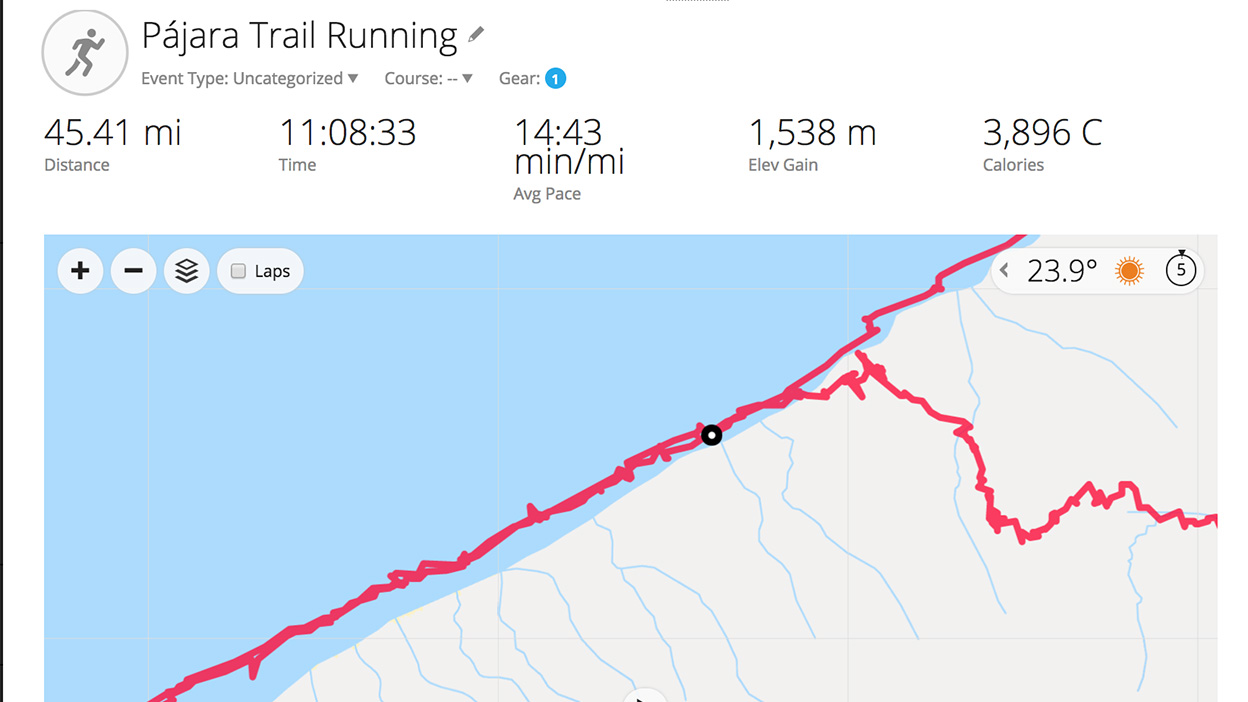
We did have some wild moments in UltraTrac mode, as you can see from the picture above, where our watch struggled with a stage of the Half Marathon des Sables that took in open beaches and windy trails. We were told that was 66km but our Garmin registered 73km.
Cadence is also tracked by the watch but perhaps one disappointment is just how many of the other running dynamics require an extra accessory such as a HRM Run chest strap or the Garmin Running Dynamics Footpod.
Things like ground contact time, vertical oscillation, stride length and power – all those form efficiency metrics that we’re starting to see – need another device.

For top dollar you’d expect the Fenix to cover all bases but unlike the newly launched Polar Vantage V, power isn’t tracked from the wrist. The metric is supported but you’ll need to pair a third-party power sensors such as Stryd or to use Garmin’s own Running Dynamics pod or HRM Tri, HRM Run Sensors.
To get power metrics to display for some you will need to download a special app from the Garmin Connect app store. It’s a bit of a faff but only needs to be done once.
One thing trail runners will love is the fact that in trail running and hiking mode, the watch automatically picks up when you move from running or hiking flat to climbing. The screen scrolls to your ascent stats without the touch of a button, it’s a small thing but a nice touch when you’re losing a lung hurting up a mountain trail.
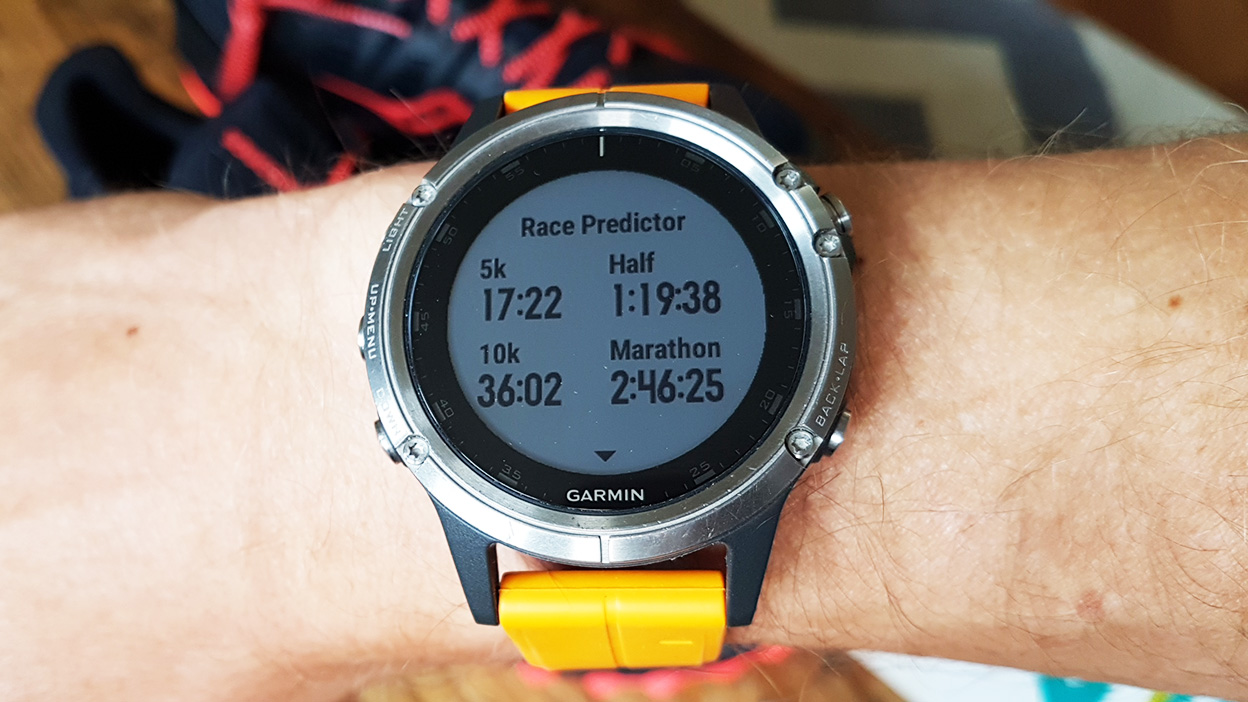
The Fenix 5 Plus also comes with Garmin’s Race Predictor feature that will use your recent run performances to estimate your race times for distances from 5km to the marathon.
These can be wild though. Our tester’s predictions came back with 17:22 (5km), 36:02 (10km), 1:19:38 (half) and a 2:46:25 (marathon). While the half and 10k might be plausible the marathon time would represent an 11-minute personal best and that feels a little sharp.
The range-topping Fenix 5X Plus (51mm) watches feature Garmin’s new Pulse Ox Acclimation feature. This shows blood oxygen saturation levels to help monitor how you're adjusting to higher altitudes. As we tested the Fenix 5 Plus we didn’t get to sample this but it’s an interesting feature for anyone hiking the Himalayas or getting high.
Swimming
- Good accuracy
- Can track numerous metrics
In keeping with the Fenix heritage, this is a very capable pool and open water swimming watch with a rich feature set.
In addition to the standard swim metrics (lengths, distance, pace, stroke count/rate, calories) you get auto stroke detection, SWOLF swim efficiency scoring and drill logging. Heart rate is possible though not via the optical sensor, you’ll need a HRM Tri or HRM Swim chest strap for that.
You’ll need to input pool lengths but that’s easy to do and the lapping accuracy thereafter is spot on. As is the stroke detection. It picked up nicely when we shifted between a front crawl and a breast stroke.
Cycling
- Routable cycling-specific street maps
- Will need accessories to get the most from it
Road cycling, indoor cycling and mountain biking are all catered for. To get the most out of the Fenix 5 Plus, you’re likely to need some accessories though. It plays nice with Garmin’s Varia Vision heads up glasses attachment, the Vector power meters and compatible third-party ANT+-enabled power meters.
Functional Threshold Power (FTP) is also logged provided you have the right accessory. As are speed and cadence.
Another feature of note for the two wheelers are the routable cycling-specific street maps that will help you ride and navigate and hopefully stay on routes that work for the wheels you’re on.
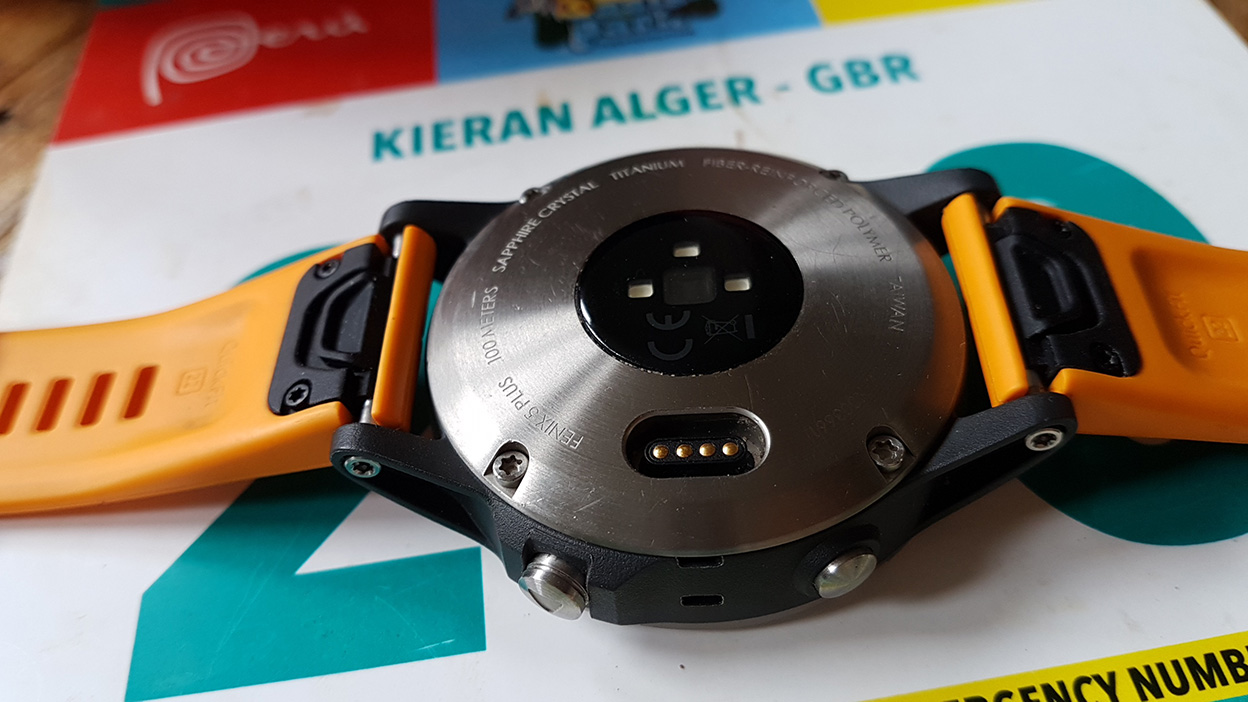
Strength Training Mode
- Can easily log your drills and rest
- Includes an auto tracking mode that works fairly well
Most watches tend to ignore the bit of training that happens when you head into the gym, but strength and conditioning is such an integral part of any serious training plan that this has always seemed a huge gap.
Granted they’ll track your heart rate during your squats and deadlifts, but few devices have bothered to attempt to track reps, sets and weight. The Fenix 5 Plus has.
Fire up strength training sport mode and you can fairly easily log your drills as you do them and track your rest. There’s also an auto set mode that’s currently in beta and this attempts to track you reps and rests without any buttons being pressed.
In our tests the Fenix found some drills easier to track than others, for example squats were logged perfectly whereas bicep curls often counted one or two over. It also struggled to always spot when you’d stopped for rest rather than maybe switching between arms or legs.
This isn’t an easy thing to do and we’re impressed that Garmin had a go. With a bit of evolution this could turn into an extremely useful tool and could finally pave the way for guided strength training plans as part of those overall schedules, rather than a calendar box that simply says ‘Strength and conditioning’.
Recovery and training insights
- Continuous heart rate tracking
- Training Load tells you how hard you're working
- Offers recovery time recommendations
If you’re a competitive amateur or serious pro, tracking what you do while you’re getting a sweat on is only half the battle. Rest, recovery and managing your training schedule for optimum results and minimal injury risk is a huge deal.
As with the Polar Vantage V, Garmin offers fantastic support here. For a start it tracks your heart rate continuously and provides a nice graph of your BPM from the last four hours, noting your high and low.
Dig deeper with the tap of a button and you get your average resting heart rate (RHR) over the week. Really useful for spotting an unusually elevated RHR, a sign it might be smart to take a rest day.
As with the Apple Watch 4, there’s also the option to have an alert fire if the Fenix spots abnormal heart rate activity.
Training Status tracks your training history to tell you whether you’re hitting the mark with your efforts. At a glance you can see your fitness progression – whether Productive, Maintaining or Detraining – and training load along with the overall status.
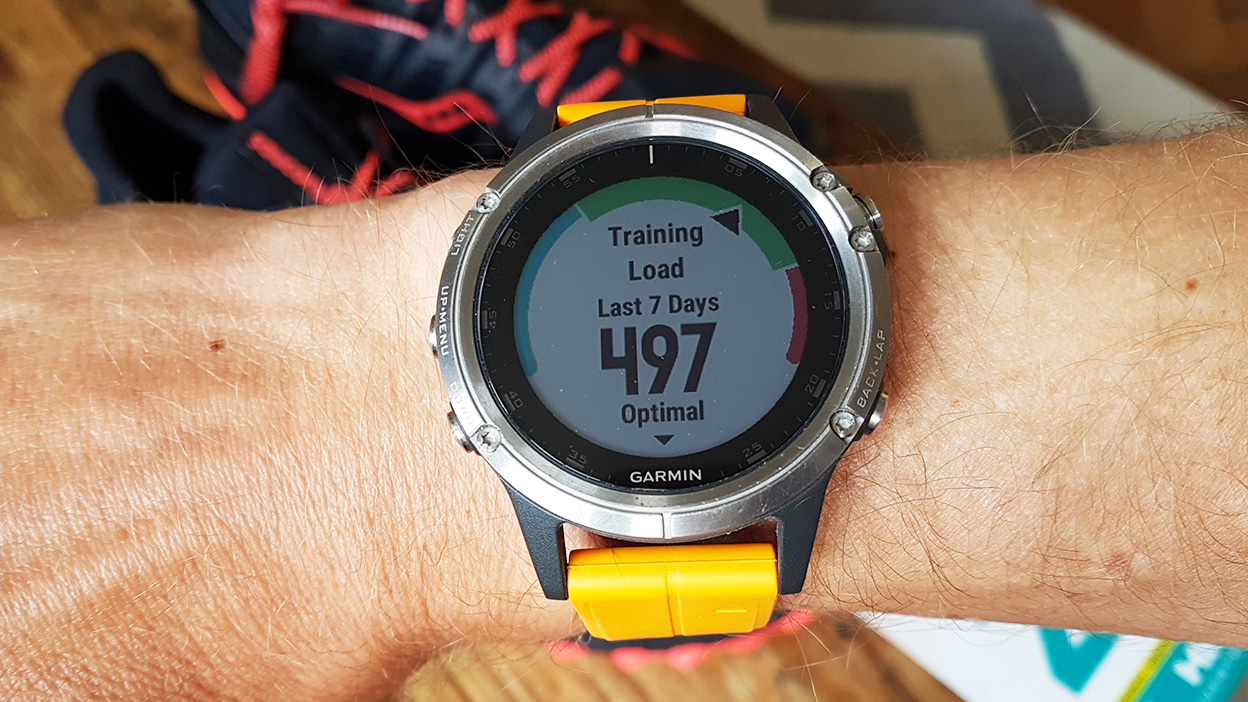
Tap one deeper and the Training Load screen converts all your training toil into a number that represents your total impact from the past 7 days and then also tells you if this is optimal or you’re at risk of overreaching.
To support this there’s a handy speedometer style indicator that moves from blue to red to show you when you’re closing in on doing too much, or you’ve been taking it too easy.
You also get recovery time recommendations in hours. These can be slightly confusing because a 20 hour recovery time doesn’t mean don’t train for 20 hours, that’s just how long it will take your body to fully recover from your most recent session.
What is useful though is a piece of qualifying text that tells you what action to take, for example, train as usual or consider a rest.
There’s a VO2 Max estimate too. We’re only mentioning this so we can include the fact ours came in at 59, which according to Garmin is superior. And that’s 100% accurate.
Current page: Fitness
Prev Page Introduction, design and specs Next Page Smartwatch features and battery life